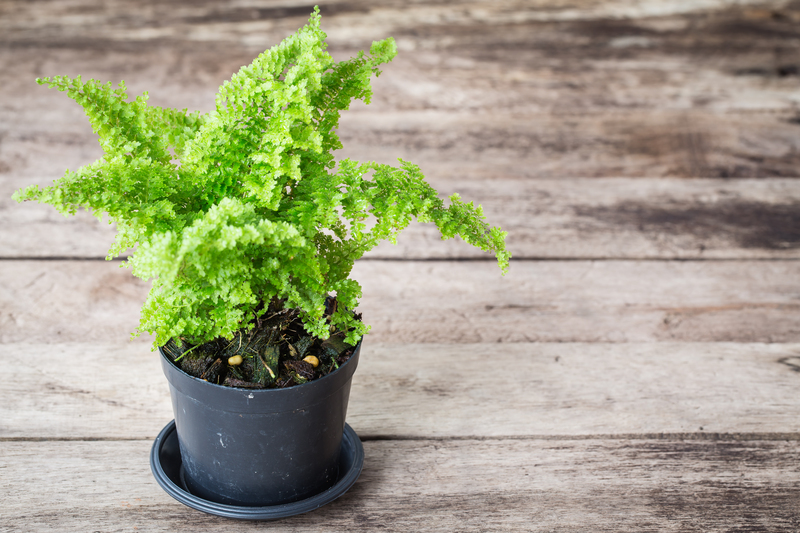Proven Approaches for Tree Stump Removal for a Clean Landscape
A beautiful landscape is not only about lush grass, colorful flowers, and healthy trees. Unsightly tree stumps can disrupt the curb appeal and introduce various safety hazards. Whether from storm damage, disease, or intentional tree removal, stumps often remain as stubborn reminders of the past. Effectively removing them ensures a safe, clean, and attractive yard. This comprehensive guide explores proven approaches for tree stump removal, with detailed tips and insights to help you restore your landscape efficiently.
Why Remove Tree Stumps?
- Safety: Stumps are tripping hazards--especially dangerous for children, pets, and the elderly.
- Pest Prevention: Old stumps can attract termites, ants, and other destructive pests.
- Disease Control: Decaying stumps can spread fungus and pathogens to healthy plants nearby.
- Aesthetic Improvement: Your landscape will look cleaner and more inviting without random stumps.
- Functional Space: Removing stumps frees up space for gardening, landscaping, or building projects.
Understanding the Type of Stump
Different trees have unique root systems and wood densities. Before jumping into removal, assess these factors:
- Hardwood vs. Softwood: Stumps of oak or maple may require heavier machinery than pine or willow.
- Age of Stump: Older, decayed stumps are easier to remove than fresh ones.
- Size: Larger diameter stumps generally demand more intensive methods.

Manual Stump Removal Techniques
Digging Out the Stump
This traditional approach is best suited for small to medium-sized stumps with limited root systems. It is cost-effective and requires basic tools, but can be labor-intensive.
Tools Needed:- Spade or shovel
- Mattock or pickaxe
- Pruning saw or axe
- Heavy-duty gloves
- Clear the area: Remove any rocks, debris, or excess soil surrounding the stump.
- Excavate the roots: Use a shovel or mattock to dig around the roots and expose them.
- Cut and sever roots: Slice through the main roots using a saw, axe, or pruning shears.
- Leverage and lift: Rock the stump back and forth to break up soil and loosen its grasp. Pry out the remaining roots as needed.
- Remove the stump: Once free, pull the stump up and out of the ground.
- Fill the hole: Backfill with soil and level out the land for a clean finish.
Chemical Stump Removal Solutions
Using Stump Removal Chemicals
For property owners who prefer a less labor-intensive solution, chemical removal is a proven approach for old or decaying stumps. This method accelerates decomposition for easier extraction.
- Purchase a commercial stump remover, typically containing potassium nitrate.
- Drill several deep holes (about 1 inch wide and 10 inches deep) into the top and sides of the stump.
- Pour the chemical granules into the holes and add water as directed.
- Wait for four to six weeks while the stump becomes soft and spongy.
- Once decomposed, break up the stump with an axe or shovel, and remove the remains.
- Minimal physical labor required.
- Effective for large or multiple stumps.
- Affordable and available at most garden centers.
Natural Decomposition with Household Products
Some homeowners prefer environmentally friendly alternatives, using everyday products such as Epsom salt or rock salt to accelerate natural decay.
How to Apply:- Drill multiple holes into the stump's top and sides.
- Fill with Epsom or rock salt.
- Add a small amount of water to each hole.
- Cover with a tarp to retain moisture and encourage bacterial activity.
- Repeat the process every few weeks until the stump softens and breaks apart.
While this process can take several months, it's safe, non-toxic, and gentle on the surrounding environment.
Mechanical Tree Stump Removal Methods
Stump Grinding
One of the most effective stump removal methods for large or hard stumps is stump grinding. This mechanical process involves specialized equipment that grinds the wood into small chips, making it easy to clear and repurpose the area.
Key Benefits of Stump Grinding:- Quick and efficient--most stumps removed in under an hour.
- Removes both stump and surface-level roots.
- Wood chips can be recycled as mulch for landscaping.
- A trained operator positions a stump grinder over the stump.
- The rotating cutting disk chews away the wood to below ground level (typically 6-12 inches).
- Debris and leftover roots are removed, and the hole can be filled with soil or sod.
Note: Stump grinders can be rented, but if you lack experience, hiring a professional is recommended. The equipment is powerful and must be used with care.
Excavator or Backhoe Removal
For large tree stump removal projects or construction sites, heavy machinery such as an excavator or backhoe may be necessary. This approach ensures a thorough extraction, including robust root systems, but does result in larger disturbances to the landscape.
When to Use:- Multiple large stumps need removal.
- Stumps are located on development land.
- Speed and total removal are priorities.
Be aware: Professional operators should handle machinery to avoid property damage or injury.
Fire-Based Stump Removal
Burning out a stump is a proven but risky method for tree stump removal. It is suitable in rural areas where fire hazards can be controlled.
Steps to Burn a Stump:- Drill holes into and around the stump to improve airflow.
- Pour kerosene or fuel oil into the holes (never use gasoline).
- Allow the stump to absorb the flammable material for several days.
- Light the stump and monitor the controlled burn until only ash remains.
Important: Check local regulations before attempting this method, as burning may be prohibited in residential or wildfire-prone areas.
Eco-Friendly and Innovative Stump Removal Methods
Rotting Stumps Naturally with Fungi
Encouraging natural fungal growth is a sustainable stump removal technique for patient homeowners. Mushrooms and other decomposers hasten wood decay.
How to Do It:- Moisten the stump thoroughly.
- Drill holes and plug with sawdust, then inoculate with mushroom spawn.
- Cover with a tarp or mulch to retain moisture.
- Wait several months as fungi break down the stump from within.
This approach is not quick, but it is environmentally responsible and can even produce edible mushrooms if you use the right species!
When to Hire Professionals for Stump Removal
Some stumps, due to their size, location, or proximity to utilities, require expert attention. Professional stump removal services have the equipment and expertise to handle the largest or hardest projects safely and efficiently.
You should consider calling experts when:- The stump is near buildings, fences, or underground utilities.
- You lack the time, physical ability, or tools for removal.
- Dealing with extensive root systems or multiple stumps.
- You wish to avoid potential injury and ensure a clean landscape.
*Contact more than one service provider and request quotes. Check reviews and verify insurance before hiring.*
Landscaping After Stump Removal
Once you've removed the stump, the area may require some attention. Here's how to restore your landscape for lasting appeal:
- Soil Amendment: Add rich topsoil and compost to replenish nutrients lost during removal.
- Level and Compact: Grade the area to prevent future settling and create a smooth surface.
- Reseeding or Sodding: Plant grass seed or lay sod for an instant green look.
- Landscaping Upgrades: Consider planting new shrubs, trees, or flowers to enhance the space.

Frequently Asked Questions About Tree Stump Removal
How long does stump removal take?
Manual removal can take several hours depending on size and root depth. Chemical and natural methods take weeks to months. Mechanical grinding usually removes the stump in under an hour.
What is the most effective method for stump removal?
Stump grinding is often considered the most effective and efficient stump removal technique, especially for large stumps, but each method has its applications depending on the stump's size, type, and location.
Can I plant a tree where an old stump was removed?
Yes, but it's essential to clear away as much of the old roots and wood chips as possible, replenish the soil, and allow a few months for settling. Consider planting a different species to prevent disease recurrence.
Is stump removal environmentally safe?
Most stump removal methods are safe when used correctly. Natural decay and manual methods have the least environmental impact, while chemical removal should be used with caution to avoid affecting surrounding vegetation.
Conclusion: Choose the Best Approach to Achieve a Clean, Inviting Landscape
Whether you opt for manual digging, chemical application, stump grinding, burning, or ecological solutions, each approach has its place in the world of proven tree stump removal strategies. The right choice depends on your stump's characteristics, your timeline, environmental considerations, and budget. Remove those stubborn stumps to create a clean, safe, and attractive landscape--one you'll be proud to showcase!
Ready to say goodbye to unsightly stumps and welcome a refreshed outdoor space? Assess your needs and use the best stump removal approach for a truly stunning, stump-free landscape!